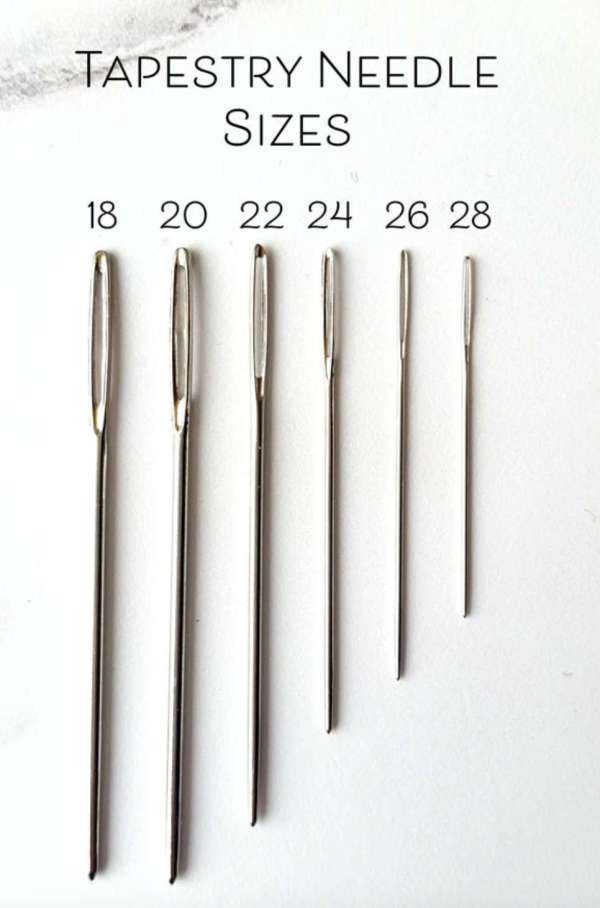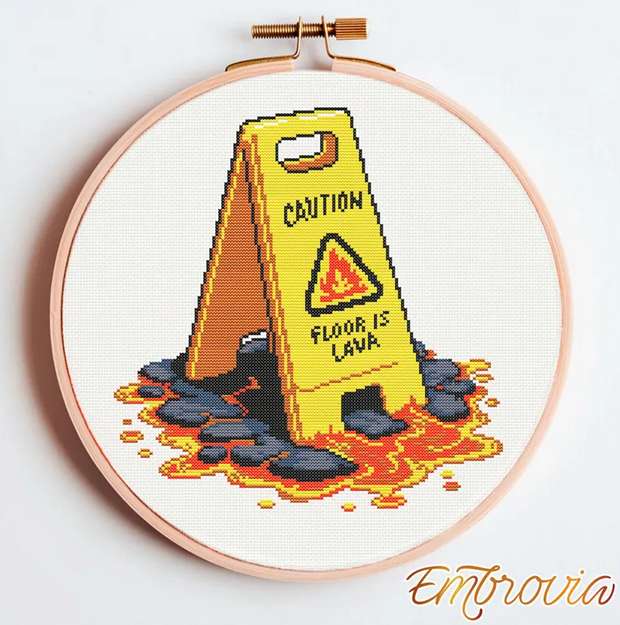
I do cross stitch from time to time, but I haven’t ever given much thought to the supplies I use to do it. I have always used whatever I happened to have access to, including whatever needle was nearby.
That means I’ve done cross stitch with sewing needles, and with blunt needles meant for yarn, too.
But did you know there are different kinds of needles that are just for cross stitch and embroidery?
Tapestry needles are the needles that are made for working cross stitch and embroidery, and just like my yarn needle, they aren’t sharp, though tapestry needles meant for cross stitch are smaller than the ones used to seam knitting or crochet projects.
In fact there’s a range of sizes, and it’s best to use different needles depending on the size of fabric you’re using. Which makes sense, because different sized fabric has slightly different sized holes for the needle to go through.
Gathered has a great guide to tapestry needle sizes, but in general as the count of the fabric goes up, the number size of the needle also goes up, but that means that the needle itself is getting smaller. So for example for working on 14 count fabric you’d want to use a size 24 needle, whereas for 16 count fabric you’d use a 26, which is actually a little smaller.
Larger holes in your cross stitch fabric can accommodate larger needles, and if you’re stitching on something like burlap you can use a large needle like my yarn needle. When stitching on fabric instead of cross-stitch cloth, you’ll want to use a smaller needle or go to a sharper sewing needle if you’re having trouble piercing the fabric (which may happen if you’re stitching on a thick fabric).
Do you pay attention to the type of needle you use when you cross stitch? Have you found there’s a difference when working with different fabrics? I’d love to hear about it!
[Photo: Stitched Modern.]
 Embrovia is a cross stitch designer with a lot of funny designs, plenty of ghosts and cats and other fun things for you to stitch. Let’s take a closer look.
Embrovia is a cross stitch designer with a lot of funny designs, plenty of ghosts and cats and other fun things for you to stitch. Let’s take a closer look.